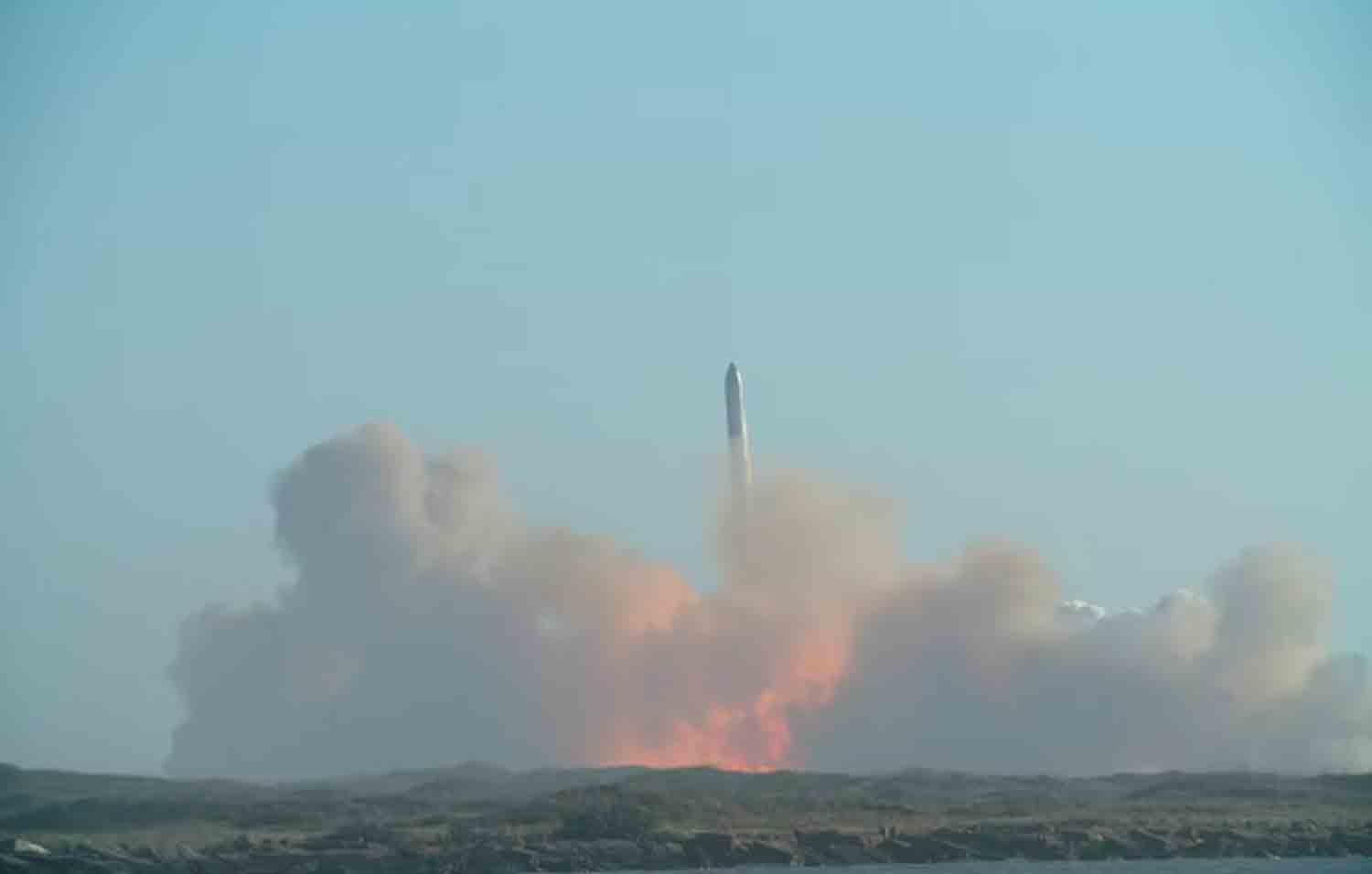A SpaceX Starship rocket disintegrated in space just minutes after its launch from Texas on Thursday, prompting airlines to reroute flights over the Gulf of Mexico to steer clear of falling debris and hindering Elon Musk‘s flagship rocket initiative.
SpaceX mission control lost contact with the newly enhanced Starship, which was carrying its inaugural test payload of mock satellites and no crew, eight minutes post-launch from its South Texas facilities at 5:38 p.m. EST (2238 GMT).
Footage captured by Reuters displayed bright orange lights streaking across the sky above Port-au-Prince, Haiti, leaving behind trails of smoke. “We did lose all communications with the ship, which indicates an anomaly with the upper stage,” stated SpaceX Communications Manager Dan Huot, who later confirmed the loss of the spacecraft.
The previous failure of a Starship upper stage occurred in March of last year during its reentry into Earth’s atmosphere over the Indian Ocean, but such incidents have rarely disrupted air traffic on a large scale.
Numerous commercial flights were rerouted or adjusted their paths to avoid potential debris, as reported by flight tracking service FlightRadar24. Additionally, departures from Miami and Fort Lauderdale airports in Florida experienced delays of approximately 45 minutes. The Federal Aviation Administration, responsible for overseeing private launch operations, indicated that it had temporarily slowed and redirected aircraft in the vicinity of the falling debris, although normal operations have since resumed.
The FAA frequently restricts airspace during space launches and reentries, but it has the authority to establish a “debris response area” to keep aircraft away if a space vehicle encounters an anomaly beyond the initially designated closed zone. SpaceX CEO Elon Musk shared a video on X depicting the debris field, remarking, “Success is uncertain, but entertainment is guaranteed!” This incident occurred just one day after Blue Origin, the space company founded by billionaire Jeff Bezos, successfully launched its New Glenn rocket into orbit for the first time.
“new generation ship”
The Starship upper stage, which is 2 meters (6.56 feet) taller than its predecessors, was described by SpaceX as a “new generation ship with significant upgrades” in the mission briefing prior to the test. It was intended to execute a controlled splashdown in the Indian Ocean approximately one hour after its launch from Texas. Musk indicated that an initial evaluation of the failure revealed an internal leak of liquid oxygen fuel that caused a pressure buildup, ultimately resulting in the rocket’s disintegration.
The FAA is expected to initiate a mishap investigation, which could ground the Starship, similar to previous instances, and assess whether any debris from the rocket’s mid-flight explosion landed in populated areas or outside the designated hazard zone. This incident poses a risk to Musk’s ambition of conducting at least 12 Starship tests this year, contingent on how swiftly SpaceX can implement necessary repairs and whether the FAA proceeds with a mishap investigation. Musk stated, “Nothing so far suggests pushing next launch past next month.”
The billionaire appointed by incoming President Donald Trump to a new government cost-reduction position has consistently criticized the FAA for its perceived overreach and politically motivated actions. In September, Musk called for the resignation of FAA chief Mike Whitaker, shortly after the agency imposed a fine on SpaceX and postponed one of its launches. Whitaker announced in December that he would resign before Trump’s inauguration, but a successor has yet to be appointed.
On Thursday, SpaceX conducted its seventh Starship test of 2023, part of Musk’s ambitious multibillion-dollar initiative to develop a rocket capable of transporting humans and cargo to Mars, as well as launching large groups of satellites into Earth’s orbit. SpaceX’s approach to testing, which often involves pushing Starship prototypes to their limits, has previously resulted in dramatic failures. However, the failure during Thursday’s test occurred in a phase that SpaceX had successfully navigated before. Meanwhile, the Super Heavy booster returned to its launchpad approximately seven minutes after liftoff, executing a planned descent by reigniting its Raptor engines and securing itself with large mechanical arms attached to the launch tower.
Discover more from Defence Talks | Defense News Hub, Military Updates, Security Insights
Subscribe to get the latest posts sent to your email.





